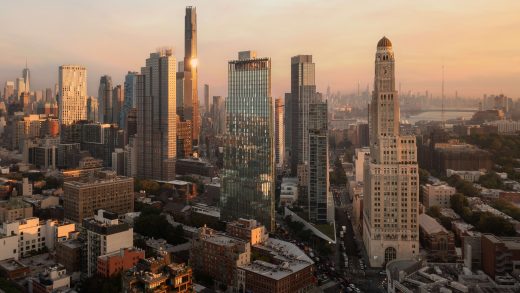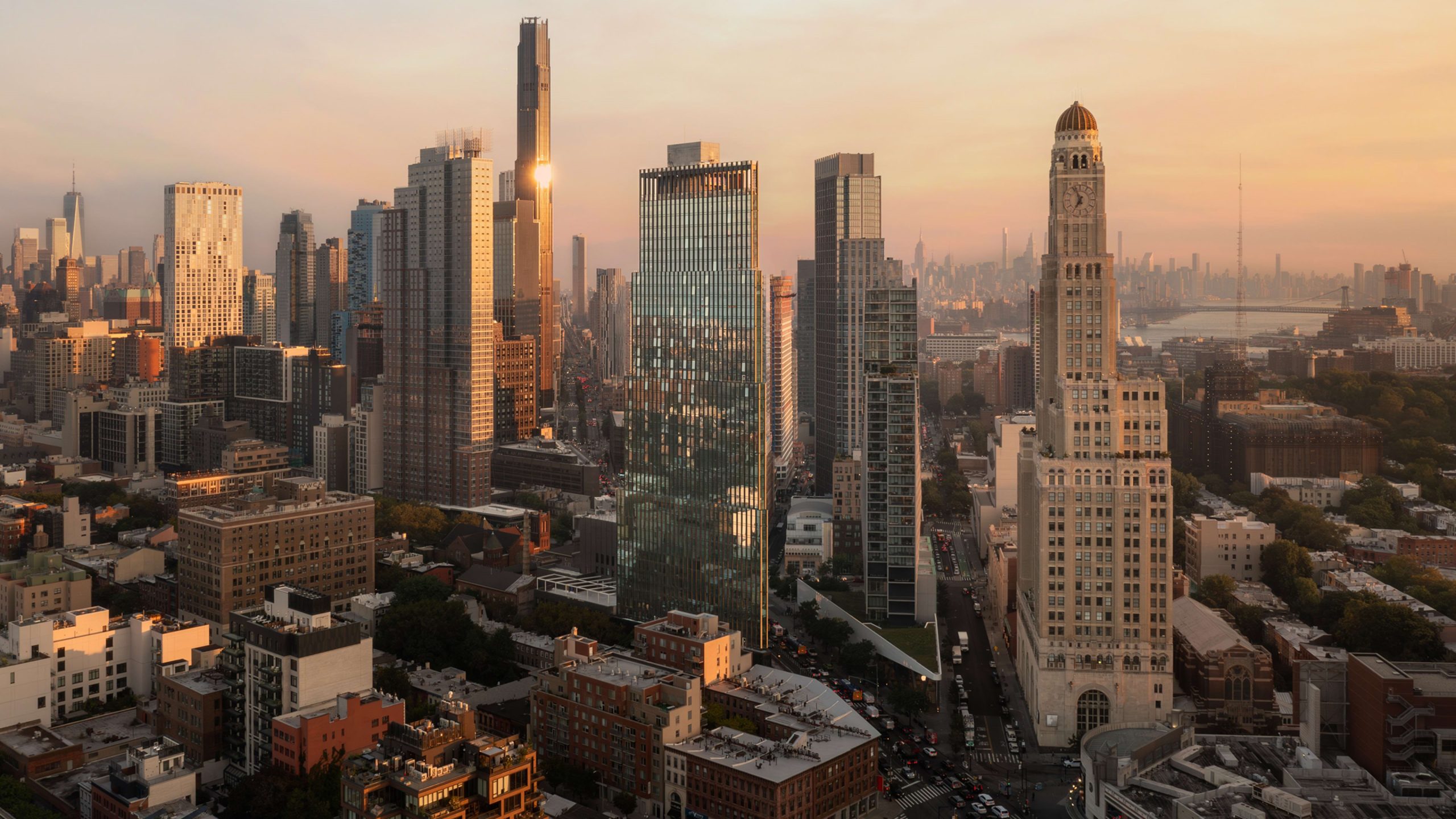Why more architects are becoming real estate developers
Why more architects are becoming real estate developers
More architects are putting on the developer hat. They’re finding they have more control, more profit, and more interesting work by doing it all.
The six-unit loft conversion underway at 62 Reade Street in New York’s Tribeca neighborhood has the dual benefit of good bones and a good backstory. A combination of two historically landmarked 19th century Italianate structures, it was previously owned by a couple who ran a clock factory on its lower floors while living in a residence they’d created by tearing down the walls between the two buildings’ top floors. It’s the kind of building that would be irresistible to a design-centric architect as well as a marketing-savvy developer.
In this instance, Eran Chen is both. Founder of the New York-based architecture firm ODA, Chen has spent decades on one side of this kind of project, creating the designs for large-scale buildings that real estate developers bring to market around the world. At 62 Reade Street, Chen and his firm are also playing the role of developer, taking on responsibility not only for designing six full-floor lofts that span the 50-foot width of the two combined buildings but also the acquisition, financing, local approvals process, and construction management.
He’s part of a new wave of architects who are diversifying their involvement in the creation of new buildings by leading their development, shouldering more potential risk, but also enjoying more potential profit. As architect-developers, they straddle two interrelated worlds that are often at odds with each other: architects want to create well-executed designs that places value on how it’s experienced by people, while developers want to pursue feasible and deliverable projects that can turn a hefty profit. A growing number of architect-developers are proving they can do both, for short- and long-term returns.
“What this helps me personally and my entire team to do is to get a deeper understanding of some elements that architects are traditionally not dealing with,” says Chen. The 62 Reade Street project has been a real-world training in identifying development opportunities, seeking out investment and financing, acquiring property, managing on-the-ground construction, and balancing design intentions with the realities of budgetary limitations. (ODA has partnered with another developer-investor on this project, BSD, so there is some institutional knowledge already at play.)
Dealing with the development side of a project also informs the way they handle the architecture. “It really allows us to be much more creative, finding solutions not just for this project but for many other projects we’re working on,” Chen says. “All of those elements that architects like to hate, we, in fact, want to embrace. Because it just makes us better.”
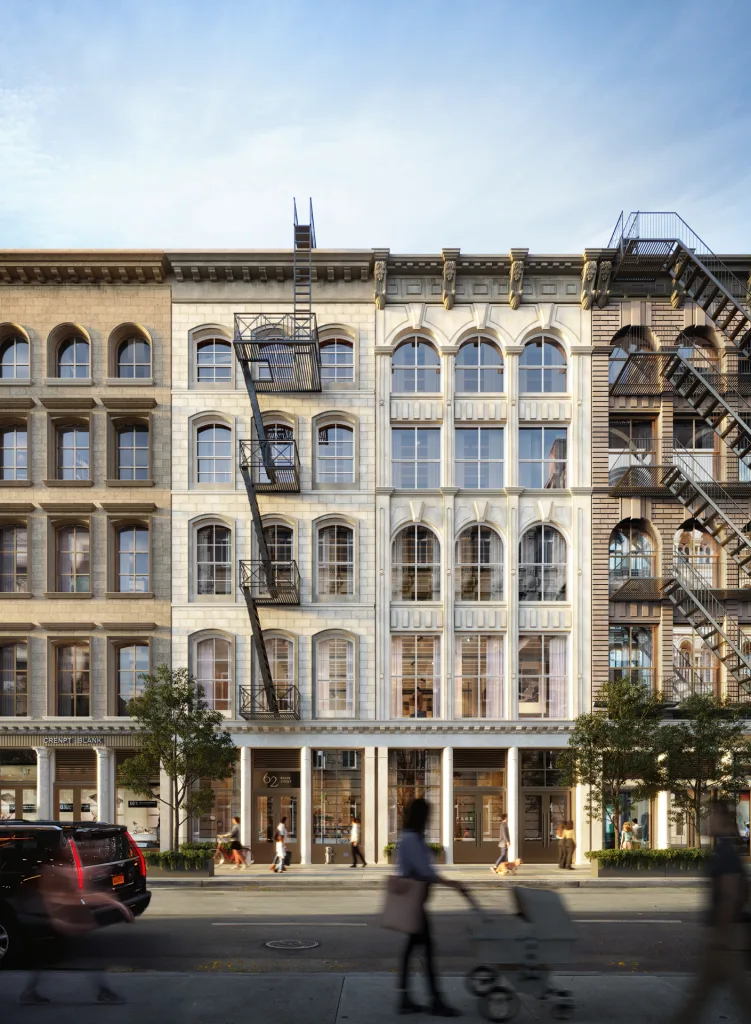
“Learning on the job”
The upside of becoming an architect-developer can vary. For some it’s as simple as making more money on a single project. For others it’s a way to get off the hamster wheel of constantly chasing projects that may only amount to a few months of work. Others have drastically reformed the way they think about the role architecture can play in cities.
For Houston-based architect Terry Smith, becoming a developer was a way to stop moving. His 25-year-old firm, Smith & Company Architects, had found itself relocating offices over and over again, including several moves just in the past decade. “My wife witnessed that and said, ‘Why don’t you look at building your own building?’” Smith says. So he did.
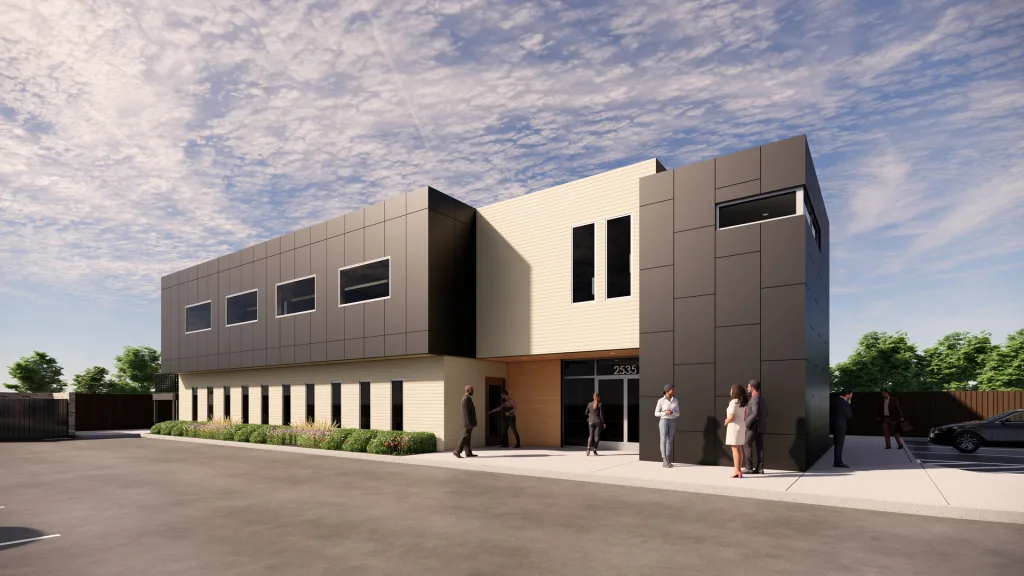
Smith’s firm has just moved into a new office building that he both designed and developed. It’s 7,000 square feet of space across two floors; his firm is moving in upstairs and he’ll be renting out the downstairs. Rental income will help finance the project, and Smith says the stability of having a long-term office will cut his firm’s overhead significantly.
Taking on the project as a developer wasn’t totally foreign territory for Smith, who’d developed a few multifamily townhomes in the early 2000s. But still, he says switching hats from designing the building to dealing with the business of development was complicated. “The financing side, the banking, that part was learning on the job,” he says. “But once the land and the financing came together, at that point it became kind of easy because this is what I do every day, right?”
Aside from a few construction delays and some extra regulatory hurdles due to the project’s location along a state highway, the development was a fairly smooth process, Smith says. One unexpected side effect of being an architect-developer, he says, was how it changed the way he looked at the design. For example, Smith says he removed an elevator from the design that any other speculative commercial real estate developer might see as essential to making a marketable project. Since his firm would be the one using the top floor, Smith decided he’d shave that expense and the staff could take the stairs. “Obviously we wanted to stick to a budget, and that’s pretty common for any developer,” he says. “But I think there were some concessions made that other developers probably wouldn’t have made if it was not a building that they were going to occupy.”
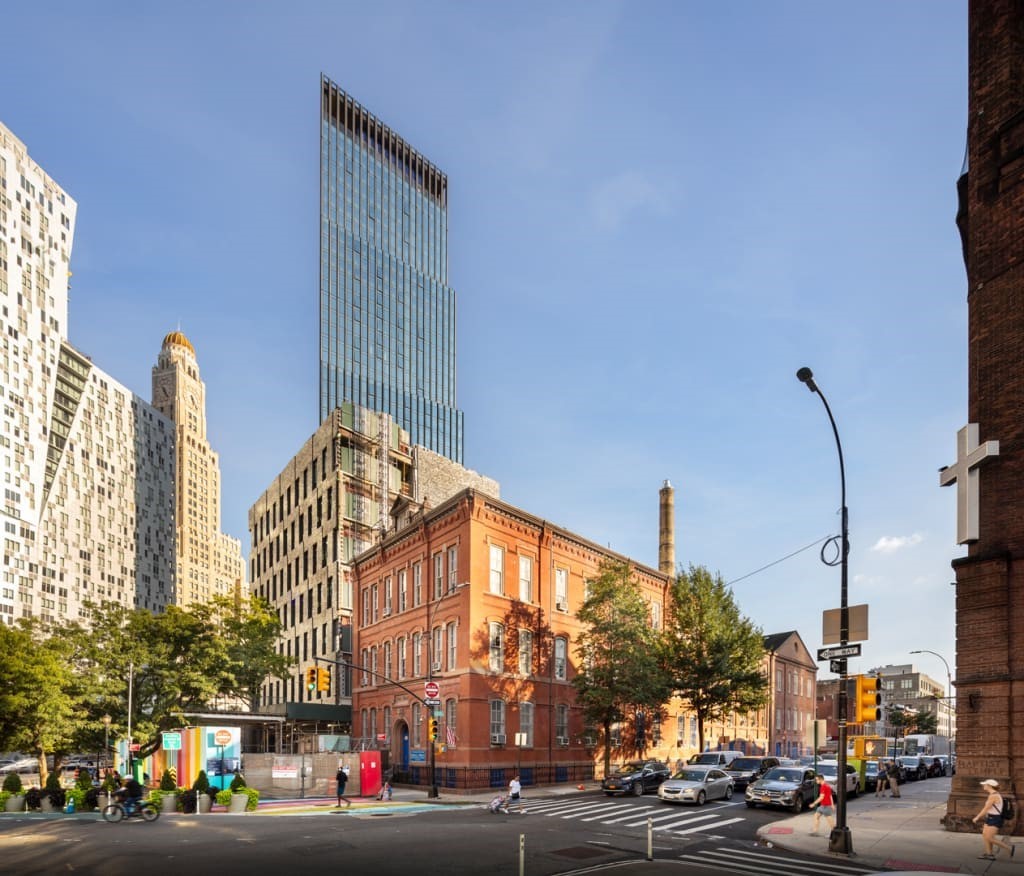
Involved every step of the way
Literal ownership can be a way to make sure the architectural ideals of the designers actually materialize in the built project. This is part of the ethos of Alloy Development, a Brooklyn-based company that develops large-scale and mixed-use multifamily complexes in New York. It’s the rare, possibly singular, real estate development firm that is run primarily by trained architects who design their own projects and also manage their land acquisition, entitlements and zoning approvals, financing, construction administration, marketing, and sales. Many of the firm’s principals even live in projects they’ve designed and developed, and other staff are incentivized to do the same.

Jared Della Valle is the firm’s cofounder and he explains that the company’s team of architect-developers makes it possible to work on large-scale projects from start to finish in a linear way, with teams performing one part of the development process and then being able to switch hats and work on the design, or the construction administration. Instead of jumping from one design project to the next like a typical architecture firm, Alloy is involved in every step of the project’s realization, and able to adjust the design details or the development timeline or the contracting to keep the project on time and on budget. “Doing all these things, you have much more visibility on where the liabilities are,” Della Valle says. “By taking on more risk, we mitigate risk.”
Because the developer fees on a project like this are about the same as the architecture fees, the company is essentially doubling its revenue, Della Valle says. And that’s before accounting for fees they’d earn when handling the brokerage, construction, and management of a building. Taking on all these roles and having an ownership stake in their buildings has resulted in an 18% internal rate of return over the company’s 18 years in business.
One recent project in downtown Brooklyn has so far taken up nine years of the company’s effort, half its corporate existence. It’s a five-building complex of residential, office, retail, and educational space, including a newly opened 440-unit tower that is the first all-electric skyscraper in New York. The multidisciplinary nature of the company means Alloy can dedicate an uncommon amount of attention to technically complex projects without sacrificing a focus on the design outcomes. “We can fuss more about the detail resolution of a big building like this and make sure that each apartment is designed as if it’s a home, not a widget,” says Della Valle.
But then staff can just as easily switch gears to start thinking about the next tower in this multiphase project, or the next land acquisition for a project that may not come to completion for another decade. “The scale of these projects helps in some ways because we have all of this runway. It also allows us to not rush through the acquisitions and to make sure that we’re picking acquisitions that are in places where we feel that our mission can really come through,” Della Valle says.
Alloy’s linear involvement in the life of a project, even through to living in it, is part of one of the more unique architect-developer business models out there. Of the 21 people who work at the company, seven live in projects they’ve designed and developed. That gives the designers an intimate familiarity with each project, as well as a long-term commitment to its success—an unusual situation for architects, who are often little more than professional services providers with only fleeting connections to buildings that can stand for decades. “When we started the business, we said maybe we’ll build 10 buildings in our careers. That is very true. I’m on, like, eight or nine,” Della Valle says. “I’ll be in my 60s by the time I get to the end of the next two projects that I have.”
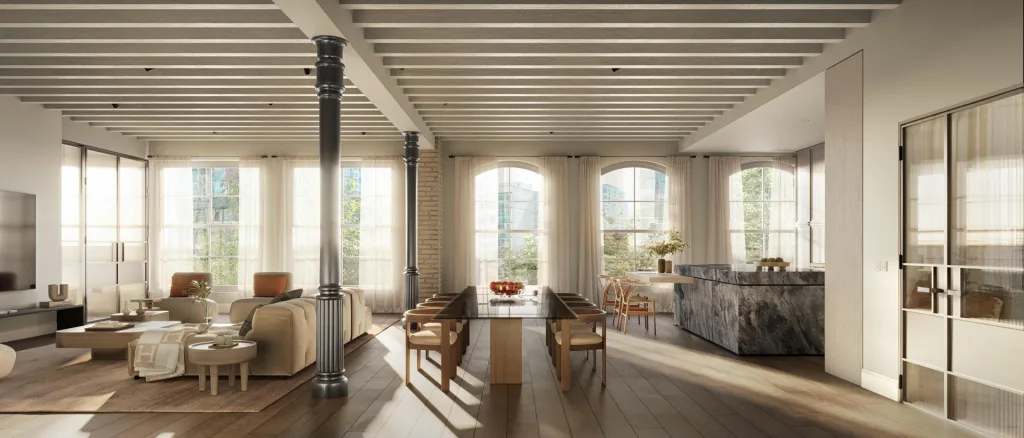
A path to better buildings
That pace and process may not be for everyone, but tacking on the extra role of developer to an architect’s design credit could prove beneficial even at a small scale. That’s the way Eran Chen sees his work designing and developing the six-unit historic loft building at 62 Reade Street. “We’re not trying to become developers. We’re not interested in getting ourselves into that field, and that’s why we’re taking on very small projects,” he says. “But we’re very interested in investigating better ways of doing things.”
Seeing the developer’s side of a project firsthand, Chen argues, is a crucial education for architects, since their work relies so heavily on the machinations of real estate development—love it, or, more commonly, hate it.
“I would not do this full time. This is not my interest, and I’m not getting excited by it,” Chen says of his first stint as a developer. “However, I think it’s an essential part of what we do. And, in fact, if every architect had gone through this process at least once in their lifetime it would open their eyes to new possibilities.”
(16)

